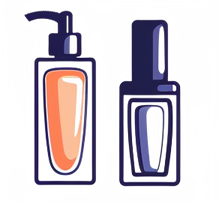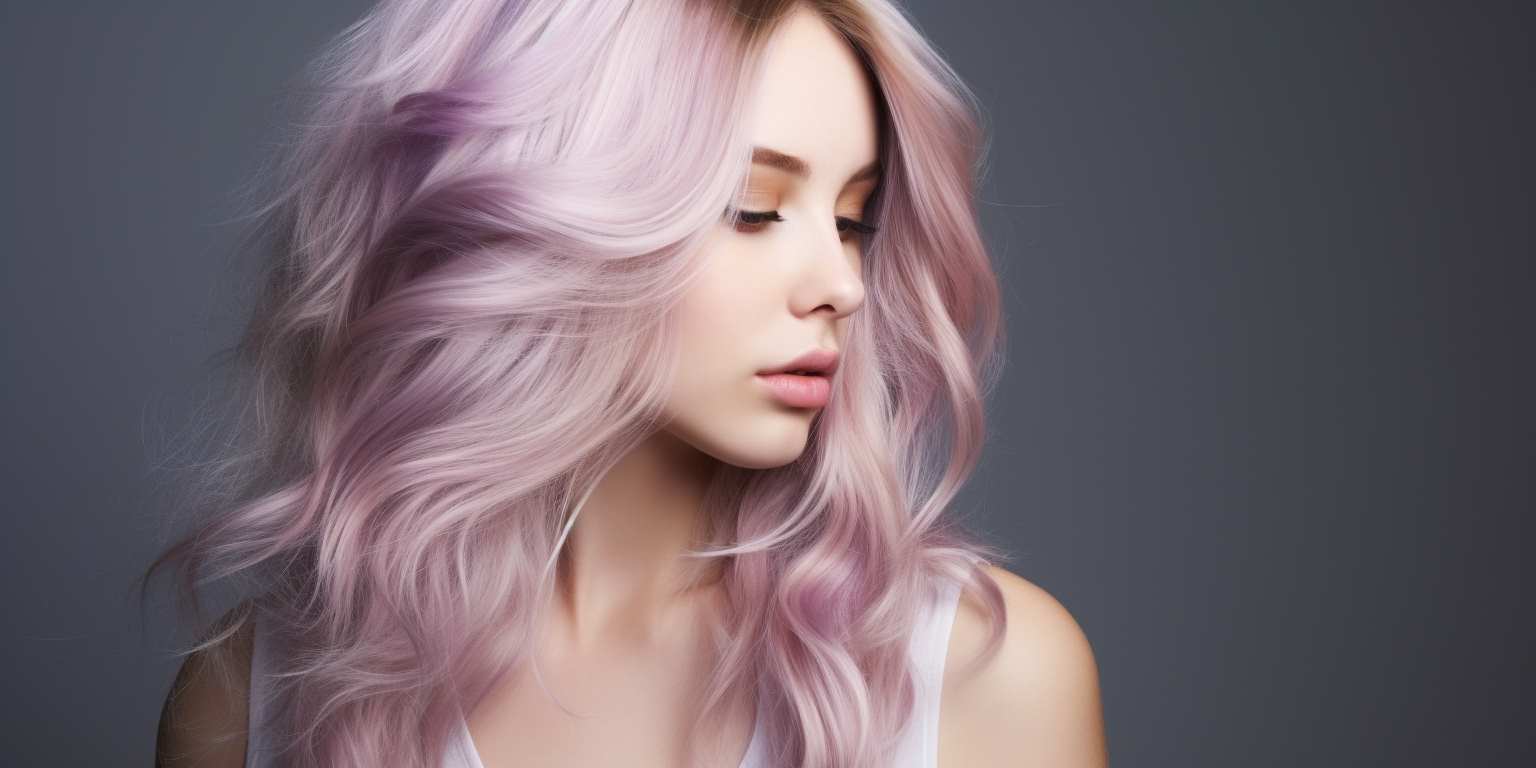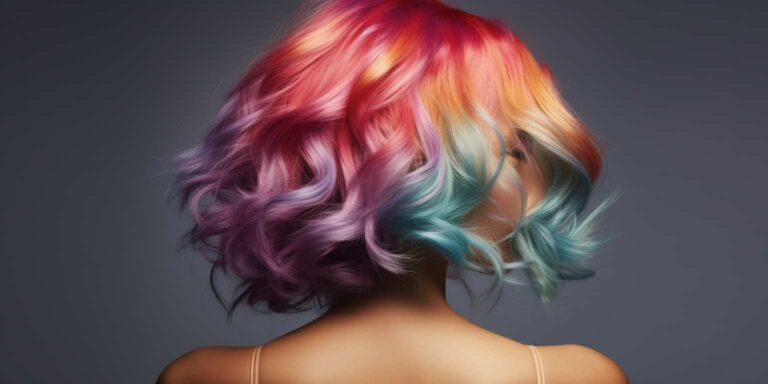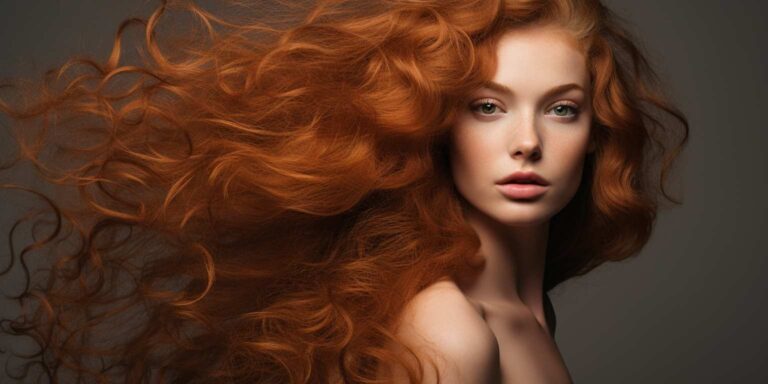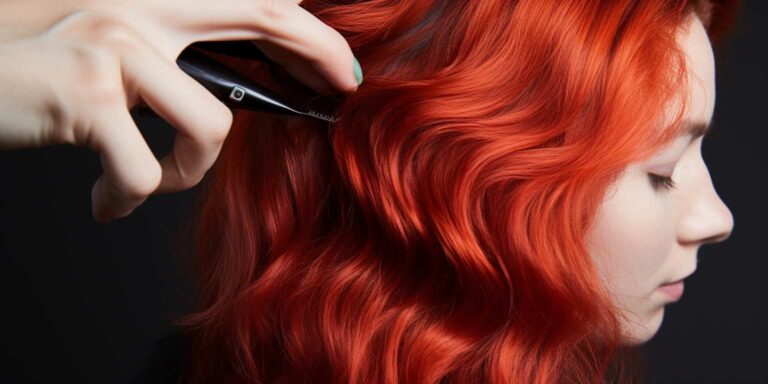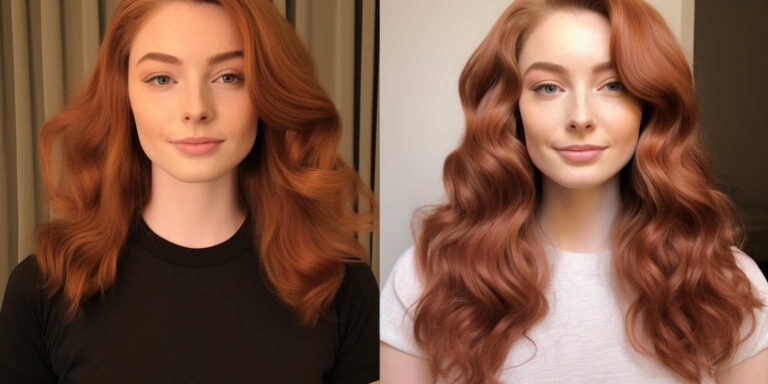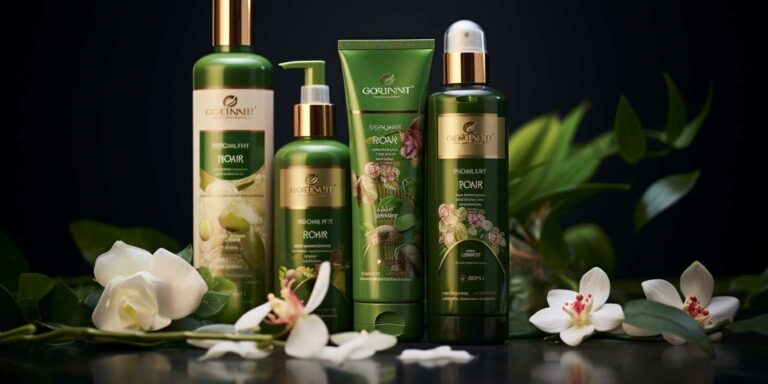Keeping blonde hair bright with purple shampoo
So, how does purple shampoo work its magic? It’s all about color theory. The color purple sits opposite yellow on the color wheel, making it a perfect complementary shade. This means that when you apply purple shampoo to your hair, the purple pigments in the shampoo counteract the yellow tones, effectively canceling them out.
When using purple shampoo, it’s essential to follow a few guidelines to achieve the best results. First and foremost, use it sparingly. While purple shampoo is excellent for toning, using it too frequently can result in overly cool or even purple-tinged hair. Aim to use it once or twice a week, adjusting the frequency based on your hair’s needs.
Additionally, be mindful of how long you leave the purple shampoo on your hair. Leaving it on for too long can lead to uneven toning or a lavender hue. Start by leaving it on for just a couple of minutes and gradually increase the time as needed. Remember, it’s always easier to add more toning than to correct overly toned hair.
When applying purple shampoo, focus on the areas where you notice the most brassiness or yellowing. Typically, this is around the roots and ends of the hair. Gently massage the shampoo into your hair and let it sit for the desired amount of time before rinsing thoroughly.
It’s also essential to follow up with a nourishing conditioner after using purple shampoo. While purple shampoo is fantastic for toning, it can be drying to the hair. A hydrating conditioner will help restore moisture and keep your locks looking healthy and shiny.
Remember that purple shampoo is not a one-size-fits-all solution. Different formulas may work better for certain hair types or shades of blonde. It may take some experimentation to find the perfect purple shampoo for your hair, so don’t be afraid to try out a few options until you find the right one.
Combatting brassiness in blonde hair with purple shampoo
Blonde hair is often coveted for its radiant shine and luminous appearance. However, maintaining that perfect shade of blonde can be challenging, especially when brassiness starts to creep in. Brassiness refers to the unwanted warm or orange tones that can develop in blonde hair over time due to various factors such as exposure to hard water, sunlight, or even the natural oxidation process.
To combat brassiness effectively, many people turn to purple shampoo. Purple shampoo contains violet pigments that help neutralize the yellow and orange tones in blonde hair, restoring it to a cooler, ashier shade. When using purple shampoo, it’s essential to follow the instructions carefully to achieve the desired results without over-toning the hair.
One of the key benefits of purple shampoo is its ease of use. Simply swap out your regular shampoo for purple shampoo a few times a week to help keep brassiness at bay. It’s a low-maintenance solution that can make a significant difference in the overall appearance of your blonde hair.
However, it’s essential to choose the right purple shampoo for your hair type and shade of blonde. Some purple shampoos are more potent than others, so if you have light blonde or platinum hair, you may want to opt for a gentler formula to avoid over-toning.
Additionally, using a purple conditioner or mask can further enhance the toning effects while providing hydration and nourishment to the hair. These products are typically used in conjunction with purple shampoo to maximize results and maintain the health of your blonde locks.
For those dealing with stubborn brassiness or looking for a quicker solution, there are also blonde hair brassiness removers available on the market. These products often come in the form of toners or color-correcting treatments specifically formulated to target and neutralize unwanted warm tones.
When using a brassiness remover, it’s essential to follow the instructions carefully to avoid over-processing or damaging the hair. These products can be powerful, so it’s best to start with a patch test and gradually increase the processing time as needed.
The science behind color correction purple wash
The science behind color correction purple wash involves understanding the principles of color theory and the physics of light. Purple wash, also known as purple cast, occurs when there is an imbalance in the color spectrum, resulting in an unwanted purple tint in images or videos.
One of the primary causes of purple wash is an overabundance of blue light relative to red and green light. This imbalance can occur due to various factors, including incorrect white balance settings on a camera, artificial lighting with a strong blue component, or post-processing errors.
To correct purple wash, it’s essential to understand the underlying mechanisms of color perception. The human eye perceives color through the stimulation of specialized cells called cones in the retina. These cones are sensitive to different wavelengths of light, with short, medium, and long cones responding to blue, green, and red light, respectively.
When an image or video exhibits a purple wash, it indicates that the red-green balance is skewed towards blue. To rectify this imbalance, color correction techniques are employed. One common method is to adjust the white balance settings either during shooting or in post-processing.
White balance refers to the process of removing unrealistic color casts to ensure that objects that appear white in reality are rendered white in an image. By adjusting the white balance towards warmer tones, the excessive blue light causing the purple wash can be neutralized.
Another approach to correct purple wash involves using color correction filters or gels. These filters are designed to absorb specific wavelengths of light, effectively compensating for the imbalance in the color spectrum. By placing a filter that absorbs excess blue light in front of the camera lens or light source, the purple cast can be mitigated.
Additionally, advanced image editing software offers tools specifically designed for color correction purposes. These software packages allow users to manipulate individual color channels, adjust color balance, and apply selective color corrections to remove purple wash and achieve accurate color reproduction.
Why purple shampoo is a must-have for blondes
Blondes, rejoice! The secret weapon to maintaining that perfect, luminous hair color lies in a magical elixir known as purple shampoo. Yes, you heard it right – purple shampoo is not just another beauty trend; it’s a must-have for every blonde out there.
So, what’s the science behind this violet-hued potion? Well, it all boils down to the color wheel. In the vast realm of colors, purple sits opposite to yellow. And what color are brassy, unwanted tones that often plague blonde hair? You guessed it – yellow! This is where purple shampoo comes to the rescue.
The magic happens because of the color-correcting properties of purple. When blondes use purple shampoo, the purple pigments neutralize the yellow tones, leaving the hair looking cooler and more refined. It’s like having your personal hair superhero, combating those brassy villains and keeping your locks in check.
Now, here’s a golden (or should I say, purple) rule – moderation is key. While purple shampoo is a miracle worker, overusing it can lead to unintended consequences. Imagine a scenario where your hair takes on a lavender tint – not exactly the chic look you were aiming for, right?
But it’s not just about banishing brassiness. Purple shampoo also contributes to the overall health of blonde hair. Most formulations are enriched with ingredients like vitamin E and panthenol, which nourish and hydrate your strands. So, it’s not just a cosmetic fix; it’s a spa day for your hair.
For those new to the world of purple shampoo, the application process might seem a tad unconventional. Picture this – you lather up with purple shampoo, let it sit for a few minutes, and rinse. It’s like a mini-ritual that ensures your blonde locks remain vibrant and stunning.
Now, let’s address the skeptics who might think, “Can a shampoo really make that much of a difference?” The answer is a resounding yes. Purple shampoo is not just a fad; it’s a tried-and-true method endorsed by hairstylists worldwide. It’s the secret weapon in their arsenal to keep their clients’ blonde hues looking salon-fresh between appointments.
How often should you use purple shampoo
Purple shampoo has gained popularity as an effective solution for maintaining and enhancing blonde or gray hair. However, determining how often to use purple shampoo can be a bit tricky. It’s essential to strike a balance between banishing brassiness and preventing overuse, which may lead to undesirable effects.
The frequency of purple shampoo usage depends on various factors, including your hair type, color intensity, and personal preferences. As a general guideline, individuals with lighter shades may find it beneficial to use purple shampoo once or twice a week. On the other hand, those with a more intense blonde or silver hue may require more frequent usage, up to three times a week.
It’s crucial to pay attention to your hair’s needs and condition. If you notice your hair becoming overly dry or developing a purplish tint, you may be using purple shampoo too often. In such cases, consider adjusting your routine to avoid potential damage.
Another factor to consider is your water’s mineral content. Hard water can contribute to brassiness, and individuals in areas with hard water may need to use purple shampoo more frequently. Conversely, those with softer water may find that they can use it less often to achieve the desired results.
When incorporating purple shampoo into your hair care routine, follow these guidelines:
- Start with once a week: If you’re new to using purple shampoo, begin with a once-a-week application to assess how your hair responds.
- Adjust based on results: Monitor the condition and color of your hair. If brassiness persists, gradually increase the frequency, but if dryness occurs, scale back.
- Use a hydrating conditioner: To counteract potential dryness, pair purple shampoo with a moisturizing conditioner to keep your locks healthy and nourished.
Tips for maximizing the benefits of purple shampoo
Purple shampoo can be a lifesaver for those with blonde, silver, or gray hair, helping to neutralize unwanted brassiness and keep your color looking fresh and vibrant. However, to maximize the benefits of purple shampoo, it’s essential to use it correctly and incorporate it into your hair care routine effectively.
Here are some tips to help you get the most out of your purple shampoo:
| Tip | Description |
| Choose the Right Product: | Not all purple shampoos are created equal. Look for a formula specifically designed for your hair type and color. Opt for a high-quality purple shampoo with hydrating ingredients to prevent your hair from drying out. |
| Use Sparingly: | While purple shampoo is effective in combating brassiness, using it too frequently can result in over-toned or ashy hair. Start by using it once a week and adjust the frequency based on your hair’s needs. |
| Pre-Treat with Conditioner: | To prevent your hair from absorbing too much purple pigment, condition your hair before applying purple shampoo. This creates a protective barrier that helps to evenly distribute the product and avoid staining. |
| Leave it On: | For maximum results, leave the purple shampoo on your hair for a few minutes before rinsing. This allows the pigments to penetrate the hair shaft and neutralize any unwanted warmth. |
| Follow with a Conditioner: | Purple shampoo can be drying to your hair, so it’s essential to follow up with a hydrating conditioner to restore moisture and keep your locks looking healthy and shiny. |
| Avoid Overuse: | While purple shampoo is great for maintaining cool tones, using it too frequently can lead to build-up and dryness. Strike a balance and incorporate it into your routine as needed without overdoing it. |
Understanding the effects of purple shampoo on different blonde tones
Understanding the effects of purple shampoo on different blonde tones is crucial for anyone looking to maintain and enhance their blonde hair. Purple shampoo has gained popularity for its ability to combat unwanted brassiness and keep blonde hair looking fresh. However, its effectiveness can vary depending on the specific shade of blonde.
Blonde hair comes in a spectrum of tones, ranging from platinum and ash to golden and warm blondes. Each tone requires a different approach when it comes to purple shampoo. The science behind purple shampoo lies in its ability to neutralize yellow and orange undertones in the hair, commonly associated with brassiness.
For those with platinum or ash blonde hair, purple shampoo is a game-changer. These cooler tones are more prone to picking up yellow hues from environmental factors, such as sunlight and pollution. Using purple shampoo helps to counteract these warm tones, leaving the hair with a crisp and cool finish.
On the other hand, individuals with golden or warm blonde tones may find purple shampoo less effective or even unnecessary. The natural warmth in these shades can clash with the cool tones in the purple shampoo, potentially leading to an undesirable outcome. In such cases, a blue shampoo may be more suitable, as it targets orange undertones without affecting the warmth in golden blondes.
It’s essential to tailor the use of purple shampoo to the specific needs of your blonde hair. Overusing it can lead to a lavender tint or dryness, especially for those with lighter blonde shades. A general rule of thumb is to incorporate purple shampoo into your routine once or twice a week, adjusting the frequency based on how your hair responds.
When choosing a purple shampoo, consider the brand and formulation. Some shampoos are more potent than others, and finding the right balance for your hair is key. Additionally, complementing your purple shampoo with a hydrating conditioner is essential to maintain the overall health and moisture of your blonde locks.
